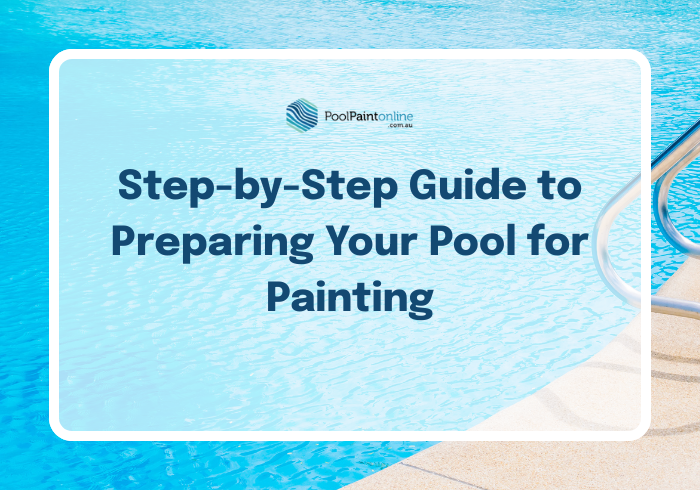
Step-by-Step Guide to Preparing Your Pool for Painting
Share
Why Proper Preparation is Key
Before you even open a tin of Luxapool® paint, there’s one crucial step that will make or break your finish: surface preparation. A properly prepped pool surface ensures that the paint bonds correctly, lasts longer, and resists bubbling, peeling, or fading.
Whether you're using epoxy or chlorinated rubber, the process is similar — but it requires a bit of elbow grease and attention to detail. Here’s how to get it right the first time.
What You'll Need to Get Started
Make sure you’ve got everything on hand before starting. This helps avoid delays and ensures a smooth workflow.
- Safety gloves, goggles and mask
- High-pressure cleaner or hose
- Stiff scrubbing brush
- Acid etching solution (if required)
- Surface repair materials (for cracks)
- Primer or sealer depending on the surface
-
Painting accessories like rollers, extension poles, and brushes
Step 1 – Drain and Inspect the Pool
Start by draining the pool completely and giving it a close inspection. Look for cracks, flaking paint, algae build-up, or any structural damage. Note what needs repairing before moving forward.
Step 2 – Clean Thoroughly and Remove Contaminants
Use a high-pressure cleaner or hose with a stiff brush to clean the entire surface of the pool. You’ll want to remove:
- Dirt and dust
- Algae or organic build-up
- Oils, sunscreen residue, and chemical deposits
Pay extra attention to waterlines, steps, corners and cracks.
Step 3 – Repair Any Cracks or Surface Damage
If you find structural cracks, pitting, or chips, patch them up using the correct filler for your surface type. Let all repairs cure fully before moving on.
This is also a good time to use any primers or sealers needed for porous, chalky, or previously painted surfaces.
Step 4 – Etch or Sand the Surface for Better Adhesion
To help the paint bond to your pool, you’ll need to roughen the surface:
- For bare concrete, use an acid etch or mechanical grinder
-
For fibreglass or previously painted pools, use a light abrasive sand
Always wear safety gear and follow the instructions on your etching solution.
Step 5 – Rinse, Dry and Prime
Once cleaning and prep are done, thoroughly rinse the pool to remove all residue. Allow the surface to dry completely — this is critical, as moisture can compromise adhesion.
Apply a primer or sealer only if required for your pool surface and chosen paint type. Check the product specs or ask us if you're unsure which is best.
Shop the Right Primers, Sealers and Accessories
Need the right gear? We’ve got everything you need in one place:
🧪 Browse Primers & Sealers to treat your surface before painting
🖌️ Grab your rollers, brushes, trays and accessories for a professional finish
💡 Not sure what you need? Our team is here to help with product guidance and recommendations
Common Pool Surface Issues to Watch For
- Flaking or powdery existing paint
- Visible cracks or pitting
- Mould, algae, or organic stains
- Efflorescence (white, salty deposits)
- Oil or chemical residue near the waterline
- Uneven or slippery patches
Ready to Get Your Pool Surface Prepped?
Start strong with expert tools and prep products from Pool Paint Online. We’ll help you get the best results from your Luxapool® paint — every time.
📞 Contact us today for support on choosing the right primer, sealer or accessories for your DIY pool painting project.

